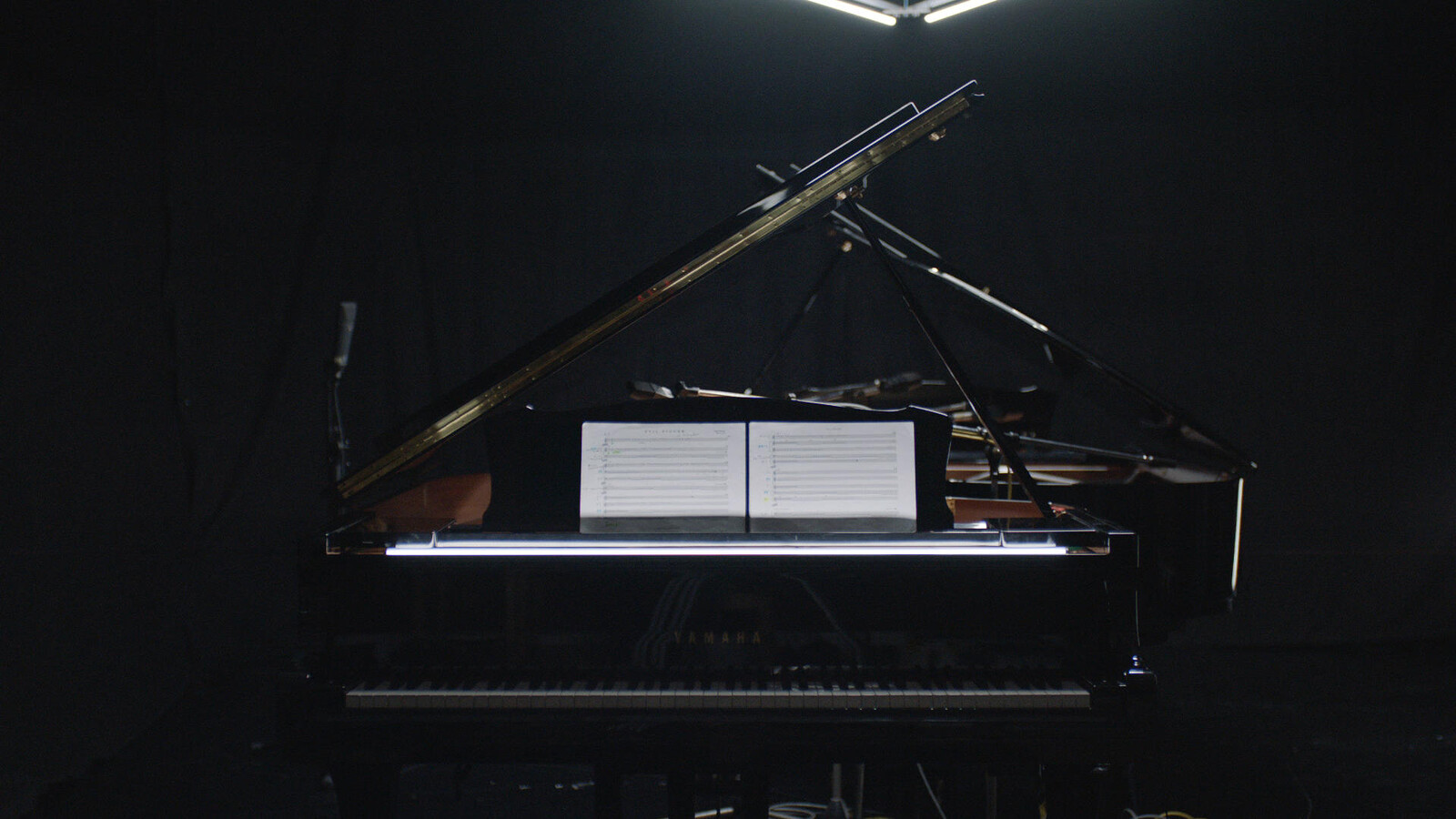May 29, 2018, 7pm
311 East Broadway
New York, NY 10002
USA
Join us for the screening of The Otolith Group’s recent film The Third Part of the Third Measure (2017), premiering in New York at e-flux on Tuesday, May 29 at 7pm; and at Eyebeam on Tuesday, June 5 at 6:30pm.
The screening at e-flux will be followed by a discussion with the group’s Kodwo Eshun and Anjalika Sagar, and responses by music scholar George Lewis, and artist and performer travis.
The Otolith Group, The Third Part of the Third Measure
43 minutes, 2017
The Third Part of the Third Measure (2017), a new audiovisual composition commissioned by the Institute of Contemporary Art, Philadelphia and Sharjah Biennial 13, creates an encounter with the militant minimalism of avant-garde composer, pianist, and vocalist Julius Eastman. The Third Part of the Third Measure focuses on what The Otolith Group describe as “an experience of watching in the key of listening,” invoking political feelings of defiance and the collective practice of movement-building that participates in the global struggles against neoreactionary authoritarianism. The Third Part of the Third Measure invites viewers to attend to exemplary ecstatic aesthetics of black radicalism that Eastman himself once described as “full of honor, integrity, and boundless courage.”
The Otolith Group is an award-winning collaboration whose practice spans the moving image, audio, performance, installation, and research. Founded in 2002 by the artists and theorists Anjalika Sagar and Kodwo Eshun, the group engages with the cultural and political legacies and potentialities of non-aligned movements, new media, Black Study, Afrofuturism, and Indofuturism while thinking speculatively with science fictions of the present. Their methodologies incorporate post-lens-based essayistic aesthetics that explore the temporal anomalies, anthropic inversions, and synthetic alienation of the posthuman, the inhuman, the non-human, and the anti-human. Expanding on the work of The Otolith Group is the public platform The Otolith Collective, whose work spans programming, exhibition-making, artists’ writing, workshops, publication, and teaching aimed at developing close readings of image and sound in contemporary society. Approaching curation as an artistic practice of building intergenerational and cross-cultural platforms, the collective has been influential in critically engaging the works of Chris Marker, Harun Farocki, Anand Patwardhan, Etel Adnan, Black Audio Film Collective, Sue Clayton, Mani Kaul, Peter Watkins, and Chimurenga in the UK, US, Europe, and Lebanon. The work of The Otolith Group and Collective has been presented widely, most recently at the Berlinale 13th Forum Expanded; Khiasma, Paris; The Van Abbe Museum, Eindhoven; Sharjah Biennial 13; Institute of Contemporary Art, Philadelphia; and Haus Der Kulturen de Welt, Berlin. The Otolith Group was nominated for the Turner Prize in 2010. Their exhibition A Lost Future: The Otolith Group will be on view in New York at The Rubin Museum of Art, June 1–September 17, 2018.
George Lewis is Professor of American Music at Columbia University and Area Chair in Composition, a Fellow of the American Academy of Arts and of Sciences and the American Academy of Arts and Letters, and a Corresponding Fellow of the British Academy. His other honors include a MacArthur Fellowship (2002) and a Guggenheim Fellowship (2015). A member of the Association for the Advancement of Creative Musicians (AACM) since 1971, Lewis is author of A Power Stronger Than Itself: The AACM and American Experimental Music (University of Chicago Press, 2008), and co-editor of the two-volume Oxford Handbook of Critical Improvisation Studies (2016). His compositions have been presented by the London Philharmonia Orchestra, Mivos Quartet, Ensemble Dal Niente, Spektral Quartet, Talea Ensemble, Musikfabrik, Splitter-Orchester, International Contemporary Ensemble, and others. His opera Afterword (2015) has been performed in USA, Europe, and the UK.
travis is a Black//Native American male born in 1946 in Itawamba County, Mississippi. His work springs from a performative approach to race, gendered space, and colonial objectification, and spans calligraphy, drawing, painting, live art/performance art, and design (Shotgun Shack Vernacular Architecture). www.travistravis.com
For more information, contact program@e-flux.com.


